Once you’ve landed on the perfect spot for your garden, the next step is to figure out what you’re going to actually grow in. There are nearly an infinite number of types of gardens out there, but they simplify down to three categories: in the ground, in raised beds, or in containers. We’ll talk about the pros and cons of each one a bit here, and then you can decide which one (or a combo) is right for you and your space.
Growing In the Ground
The classic. Cut out your grass, till up the soil, plant, and grow! That simple, right? Well, not exactly. Growing in the ground can actually be one of the more complicated ways of growing—but if you do it right, it can be very affordable and very productive. Let’s talk through the pros and cons.
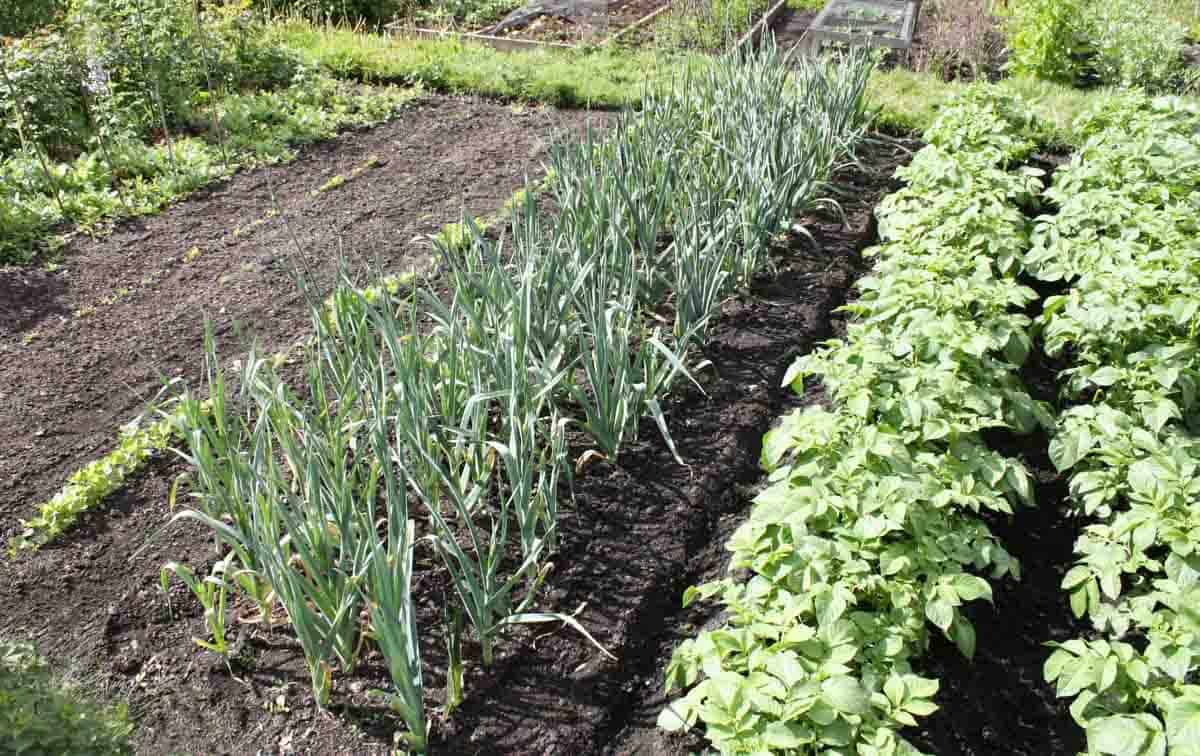
Benefits of growing the ground:
- Affordable: You don’t need any materials and the only tools you need are a simple spade and a tiller (which you can rent from most big box stores).
- Simple to get started: You can have this kind of garden ready to plant in just a couple of hours.
- No shape/size restrictions: You can make any size and shape bed your pretty little head dreams up! We have triangle in-ground beds in our medicinal garden.
- Can grow a TON: There is a reason why most professional farmers grow straight in the ground! If you want to grow the absolute most produce in your space, planting directly in the ground is going to be the way to do that.
- Less watering: By being in the ground and having access to every drop of groundwater that comes through, you’ll have to water your own garden a whole lot less than if you used raised beds or containers.
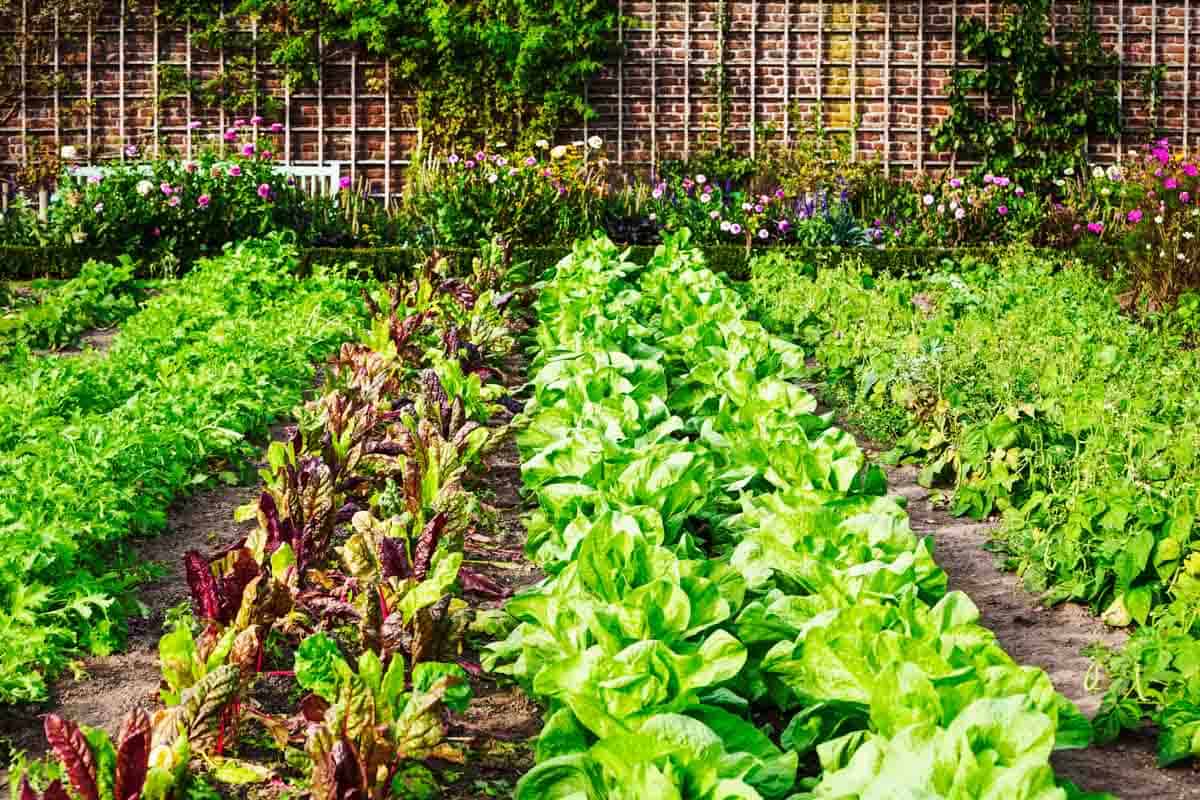
Disadvantages of growing in the ground:
- Soil quality: The truth is that for most of us, our topsoil quality is absolutely terrible. It will take a lot of amending (which means adding nutrients back to the soil in the form of composts, powders, and other organic additions) to get it to grow great veggies.
Even if your soil nutrients are great, your soil condition (or the texture/drainage of your soil) is probably not so good from years of being walked on/mowed on/played on. You can condition your soil by adding things—like sand, peat, coco fiber, etc.—but it can be a pretty hefty investment to get regular ole topsoil to behave like a good garden soil does. - Weeds: Grass and other weeds don’t just go away, even if you cut the sod out. Weeds are persistent as can be, and they’ll pop up the second an empty patch of soil is exposed.
- Can look unattractive: Some in-the-ground gardens are beautiful, but just by the nature of them, it can take a lot of work to get them there. If garden aesthetics are important to you, keep this in mind.
- Back-breaking work: Both the initial labor (digging out the sod and tilling) and the maintenance (planting, weeding, and mulching) can be hard manual work that kills a back. Because growing in the ground is…well…on the ground, that can be a long way to bend down!
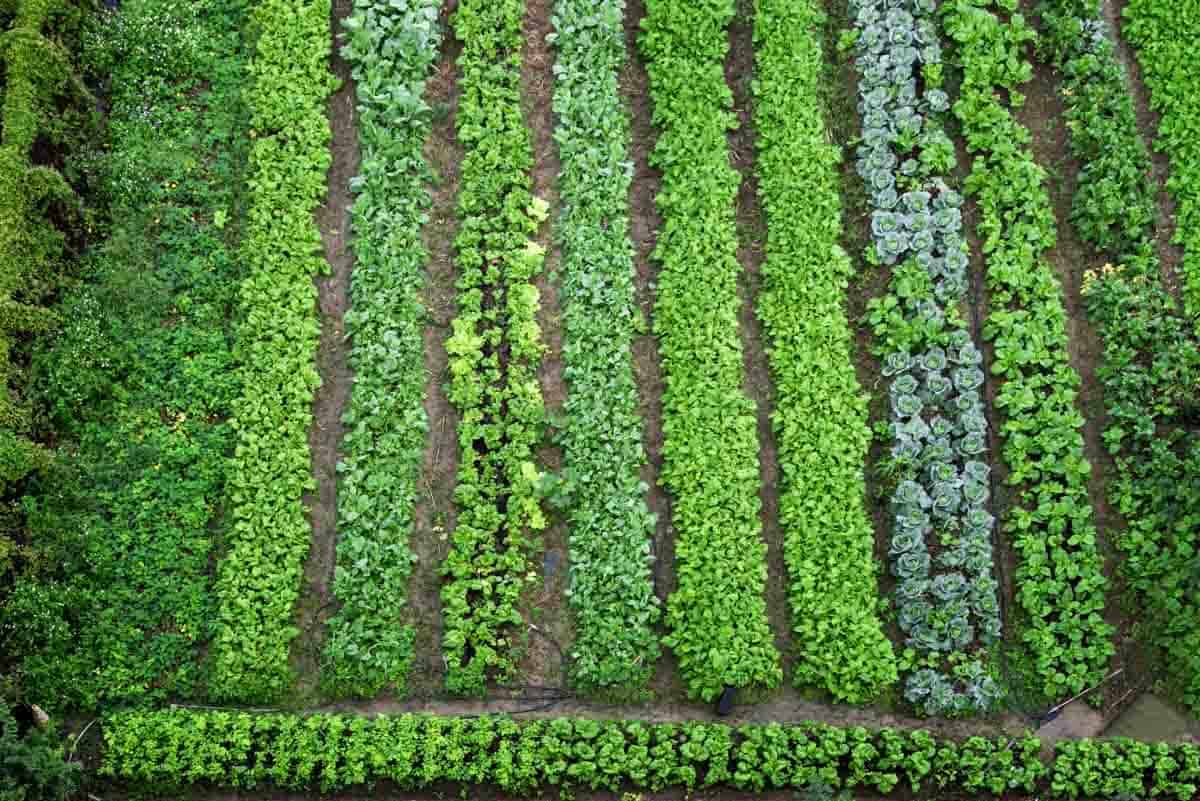
If you do want to grow in the ground, my recommendation is to do wide raised rows in the ground—these are typically called “market rows” because they are pretty commonly found in farms that grow for sales at farmers’ markets. The Vegetable Gardener’s Bible is my favorite book that explains exactly the steps for creating wide raised rows directly in the ground. The author’s gardens are beautiful!
Growing in Raised Beds
Growing in raised beds is what I think most people envision nowadays when they think of having a kitchen garden. Raised beds are rectangular or square structures that are filled with soil to grow in. They can vary in height and size. I’m not going to lie, I’m partial to raised bed gardening because it’s what we have in our garden right now! We love ours, but of course, like everything, there are trade-offs. Let’s go through them.
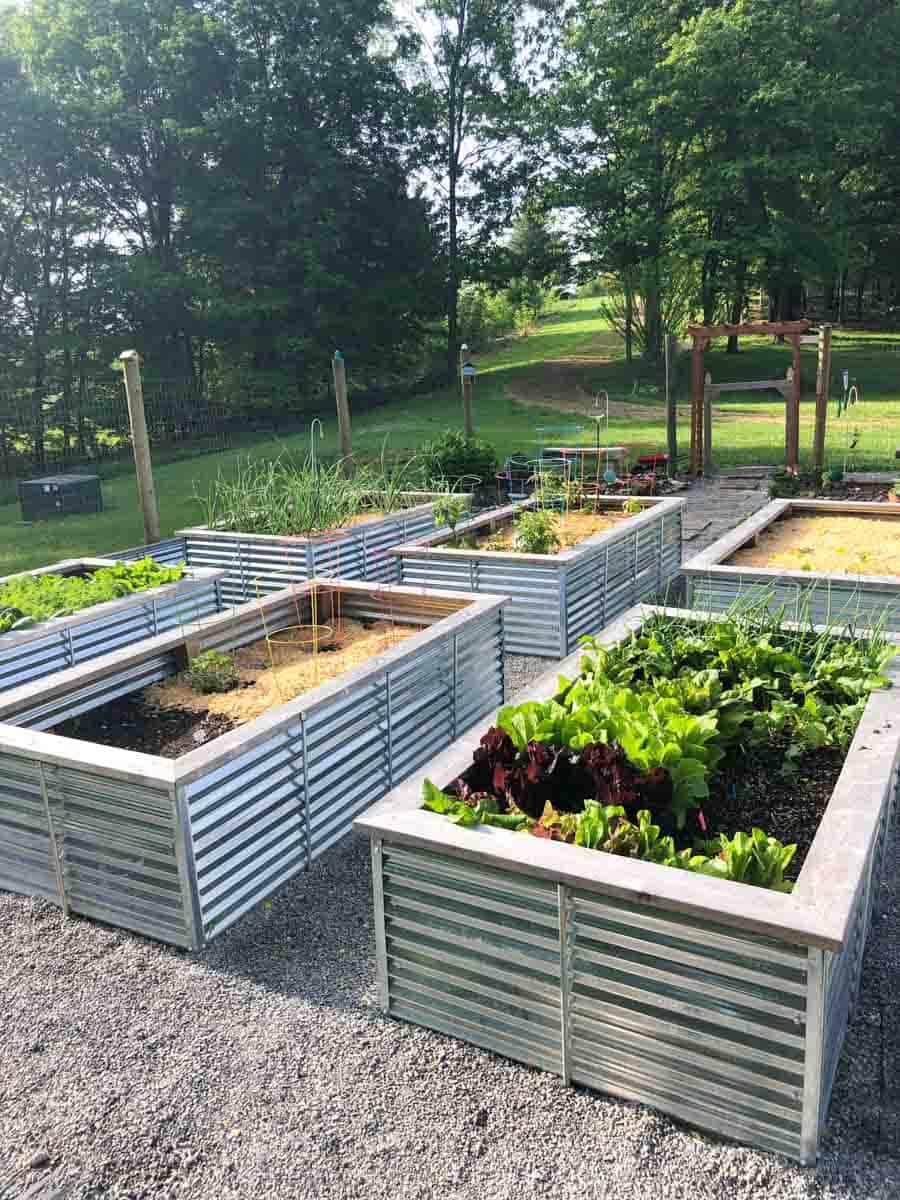
Benefits of growing in raised beds:
- You control it all: My favorite part of raised bed gardening—complete control! I control the soil, the plants, the watering, the weeds, even the bugs (we added worms to our raised beds a few years ago).
- Deep growing: Plants have surprisingly long roots. They want deep, loamy soil to spread their fingers into. A raised bed inherently gives those roots more growing space. Even more so if you create tall raised beds!
- Easier to work in: By raising up the beds, you bend over less and save your back. Since you can control the conditions, there is less weeding, too!
- Looks beautiful: There is no doubt about it, a well-done raised bed is a beautiful, glorious sight.
- No tilling: Once your beds are filled with good soil, you really don’t need to worry about tilling or doing any sort of work with heavy machinery again. You’ll want to amend your soil in your beds regularly with compost, but other than that just a light mixing in with a fork or a trowel, you don’t need any sort of machinery.
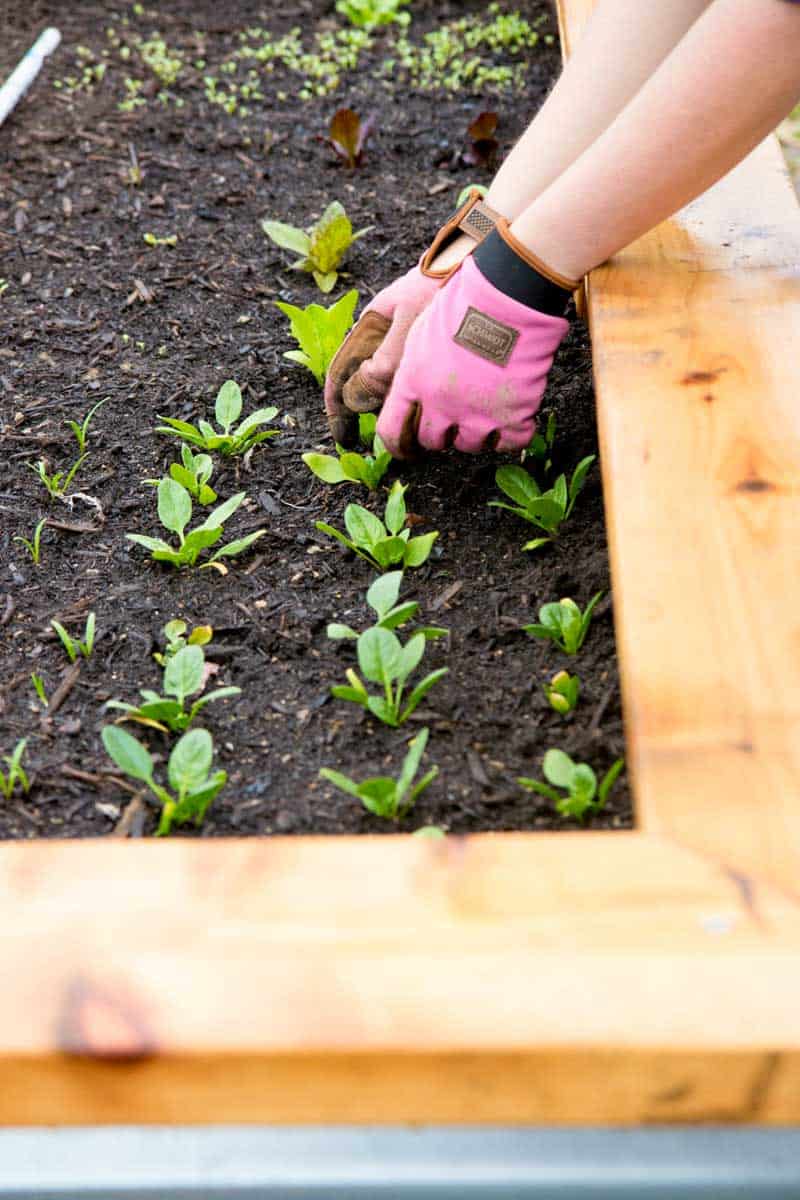
Disadvantages of growing in raised beds:
- Can be expensive: Raised beds do require materials to build. Some people upcycle pallets and make raised beds for cheap or even free, but we created what we’re hoping are beds that last decades for about $150 each in materials. If you buy premade raised beds, they can be even more expensive. It’s definitely an investment!
- Time consuming to build and fill: Assembling and filling raised beds, especially big ones, can be incredibly time consuming. But it is a one-time thing—once it’s done, it’s done. Bringing in shovel loads of soil can also take ages!
- Need to replace/repair: Raised beds aren’t a forever thing. They are exposed to the elements and will need to be repaired and even replaced after a while. Depending on your choice of materials, you can hopefully get a few decades out of a good build.
- You’ll have to water more often: Since raised beds aren’t in-ground, water will seep out and evaporate much more quickly, which means you’ll need to be watering more often.
- Limited growing space: By adding raised beds and aisles into the mix, you are inherently reducing your growing space. However, there are ways to work with that. The Square Foot Gardening method is an excellent resource for both beginning gardeners and gardeners with limited space. Many folks have great success with SFG!
Growing in Containers
Growing in containers is the best option if you’re limited on space or live in a rental where you can’t install a permanent garden. You’d be amazed at how much you can produce from just a few strategically planted pots! Here are the pros and cons:

Benefits of growing in containers:
- Take up little space: If you just have a patio or even a sunny windowsill, you can place a container there and grow some food.
- Not permanent: If you are a renter, or live in a spot where you’re prohibited from putting in a more permanent garden, containers are a great option.
- Low commitment: Not quite sure gardening is for you? Containers are a great way to try-before-you-buy. If you and your family like growing in a few containers, maybe you’ll expand next year! But if you don’t like it, you haven’t lost much.
- Affordable: A few large containers and a few bags of organic potting soil and you’re up-and-running. You can easily get a container veggie garden going for less than $50 (and even more affordably if you upcycle containers and soil).

Disadvantages of growing in containers:
- Can stunt plant growth: Because the growing space and growing medium is limited in a container, you might see plant growth stunted due to being root bound or lacking nutrients. You can always size up to a larger pot and fertilize your plants, but that can be a bit of a pain.
- Requires a lot of watering: Containers dry out much more quickly than in-ground growing or raised bed growing.
- Limited growing space: The same thing that makes containers great is what makes them not-so-great—they severely limit your growing space. Don’t be surprised if you find yourself adding more and more containers as you catch they gardening bug!
- Containers be heavy: Once containers are filled with soil and plants, they can be really heavy to move! So make sure you have ‘em where you want ‘em.

When shopping for containers, it’s important to keep a few things in mind:
- Dark containers will make the soil warm up faster, which can be an advantage for those of you growing in cooler climates, and a disadvantage for those of you growing in warmer climates. The opposite is true for light colored containers.
- In general, deeper containers will perform better than shallow containers—width is less important than soil depth. If you have to choose between a wide and shallow container and a narrow and deep container, choose the narrow and deep container.
- When choosing containers, make sure they have drainage holes! Many of the plastic pots sold in garden centers these days do not come with drainage holes predrilled, and you actually have to take a drill and large drill bit to the bottom to put in drainage holes. You cannot garden in a container without drainage holes! Trust me, I’ve tried (by accident).
- Remember: anything you drill drainage holes in can be a container! We’ve grown in an old wheelbarrow, galvanized buckets, hanging baskets, whiskey barrels, old tires, and much more.
- Going vertical is your friend with small spaces like patios and balconies! You have more space up high than you do on the floor. Stackable tower containers (like the one in the picture above) have become very popular for this exact reason.
We actually use a combination of all three growing methods in our garden, and it works well for us! The great thing about gardening is that you have a chance each season to rework your garden layout and plan—so feel free to experiment with mixing and matching different garden styles to find out what is best for you and your space. Happy gardening!

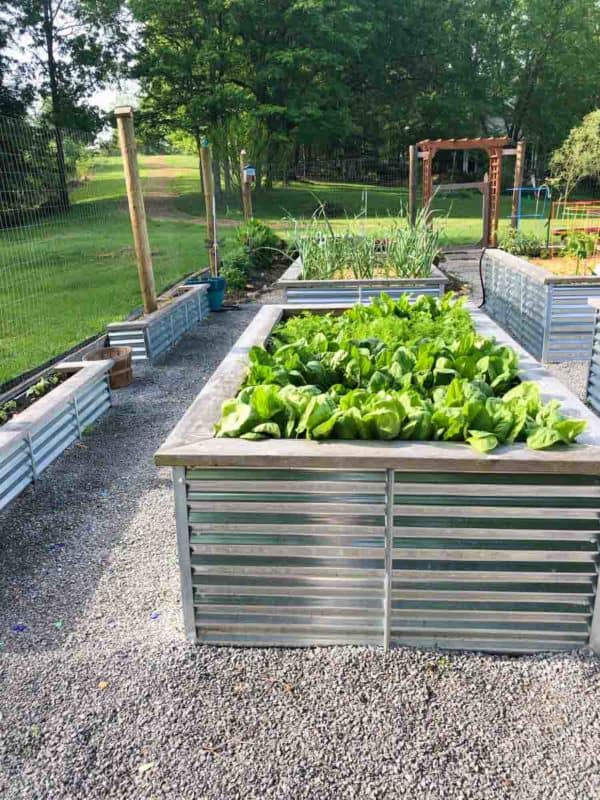






I am so happy to have found your page Cassie. I look forward to your teachings and hints to growing a sustainable garden. My husband and I started container planting about six years ago and now we have a large garden area. However, we are ever evolving and need some assistance with pest control/deterrent etc. I’m looking forward to using your tips and tricks to help propagate more efficiently.